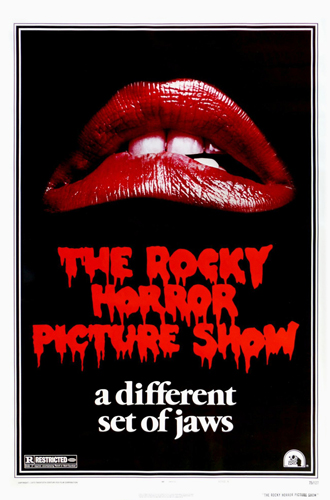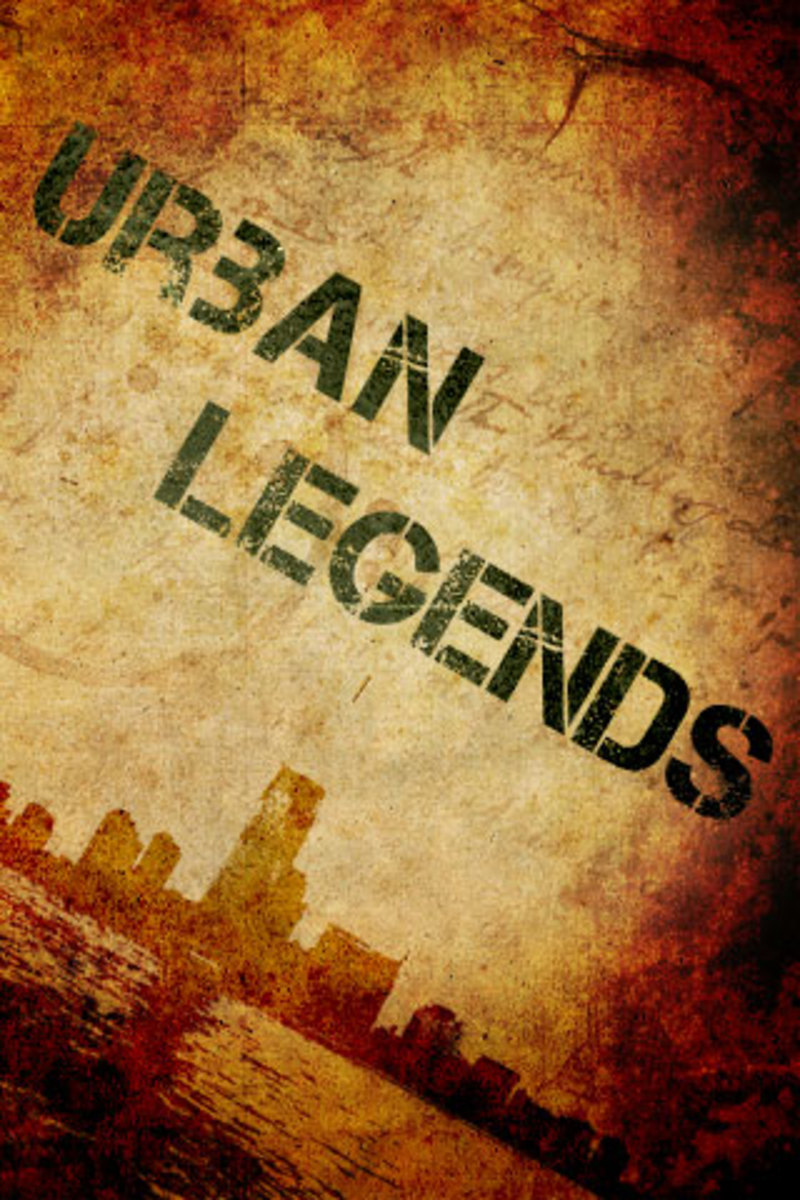- HubPages»
- Education and Science»
- Sociology & Anthropology»
- Folklore & Mythology
Ostension and Urban Legends
Ostension at the Movies

Ostension, Root: "To show"
Ostension of Urban Legends literally means "Legends That We Live" or that we 'show' instead of 'tell' the urban legend.
In the movie, Urban Legend, the entire film is about ostension. The characters within the movie make various urban legends 'real,' and enact the events within urban legends that they've heard and told.
The movie, Scary Movie, also uses a plot which involves ostention...
In turn, a lot of other movies are watched, then 'made real,' by fans who act out, show, or live the events within movies that are seen. Ostension is not limited to purely oral tales and urban legends.
The phenomenon that accompanies showings of Rocky Horror Picture Show is definitely an example of ostension. Fans literally 'become the show,' in theatre houses where Rocky Horror Picture Show is playing. Spectator-fans arrive dressed as characters, Frankenfurter, Riff-Raff, Brad, Janet and Magenta - even Dr. Scott, the wheelchair-bound character - and then the spectators 'mime' the events in real-time that are playing on the screen...throughout the entire celluloid production!
Ostension as "Legend Tripping"
Ostension occurs when the oral words of a tale are replaced by action. A more minor but very common example of this, outside of any tale, is putting a finger to the lips instead of saying, "Shhhh," "be quiet," "silence!" or "quieter, please."
In The Adventures of Tom Sawyer by Mark Twain, ostension is present in the narrative when adolescents in the story visit some haunted houses and some caves which are believed to have been the lairs of notorious criminals. These actions are a sort of adolescent ritual and sometimes acts of ostension are considered rites of passage from boyhood to adult spiritual, emotional or physical states. In short, each boy must prove his worth and pass out of boyhood fears and into the fearlessness expected of a grown man in visiting the haunted houses and lair-caves within the Tom Sawyer tale.
In present-day real life, adolescents still enact rituals that are similar to the Tom Sawyer adolescent experiences in the adventure story - and these acts have similar purposes in both real life and in the Mark Twain narrative.
Folk stories of the particular type called 'urban legends' incorporate ideas of rites of passage with great regularity. These particular kinds of urban legends most always explain the origin of a danger surrounding a certain location, site or property (car, ship, train) and include very pointed warnings (cautionary tale elements) against people trespassing onto a location, site or property. The difference between plain urban legend and ostension happening with urban legends is that the cautionary elements of a tale become more than a warning...they actually are perceived as a 'dare' to which people respond by acting out what is warned against in the legend.
With respect to the tem "legend tripping," an urban legend will be told and retold in preparation for 'the trip' - the part where people intend to participate in the 'dare' suggested by a tale. The tale-'trippers' decide, at some point, to go ahead and test out whether or not the tale/urban legend is really true.
Usually an additional ritual is added in the process of legend tripping, and this ritual is designed to double-check on the bravery or at least the determination of the trippers as well as the veracity of the urban legend in question. The ritual is usually a direct attempt to summon the spirits which haunt the designated place of origin that the legend trippers are interested in.
Now, legend tripping isn't simply some sort of 'tourist' curiosity or a way to observe a location, site or property mentioned in urban legend. The difference between 'tourism' curiosity and legend tripping is that legend tripping requires and employs connection and intended interaction with the site of origin, the property or location, as well as spirits or entities which might inhabit the area. In short, the 'dare' is the difference. Some action is required on the part of legend trippers, and the idea of a potentially dangerous experiment practiced at the location of interest very much separates legend trippers from the merely curious observer.
A Copycat movie
Pseudo- Proto- and Quasi- Ostension
Pseudo-ostension is where someone enacts a legend as a hoax.
Proto-ostension is where someone self-identifies with a legend and incorporates a legend into their experience of life. The legend, then, is believed by the person to be their personal account of events and life.
Quasi-ostension is the misinterpretation of legend for first person accounts. This happens when a legend is told but the people hearing the legend believe it to be a true account of events or experience in the life of the legend-teller.
Ostension or Myth Appropriation re: Slenderman Stabbing of 2014
Serious Slenderman Legend Tripping in 2014
On May 31, 2014, over in Waukesha, Wisconsin, U.S.A., two 12 year old girls took legend tripping very far - way too far! Criminally and Insanely too far!
The girls lured a schoolmate (friend???) out into the woods and attempted to kill her. They stabbed the girl repeatedly, then left her for dead!
The reason?
A sacrifice/offering to Slenderman!
They wanted to impress Slenderman and thought that murdering a schoolmate would please the character that they had begun to believe is a real entity.
Slenderman is a fictional character of a supernatural nature created from a creepy pasta (horror short story writing) contest on an internet forum (Something Awful forum). Slenderman was created in 2009. The Slender Man quickly became an internet meme.
Sometime between 2009 and 2014, something went wrong - admittedly, something awful went wrong - with two 12 year old girls and their interpretations of Slenderman, because the girls legend-tripped the Slenderman meme right out into a physical act - the attempted murder of their innocent teen peer.
Luckily, the victim survived and was found by someone on a bike who was able to help the girl receive medical assistance, despite her having well over a dozen stab wounds.
More Examples of Ostension
Ostension - showing by example instead of by definition.
Ostension is used extensively in poetry as well as urban legends and folklore. Sometimes a word is hard to explain whereas it is easy to represent by something else, such as in the case of trying to convey the idea of "green" by using known green things instead of writing or saying "green." One might use 'pine tree,' 'grass,' and in poetry, 'verdant' is extremely common to use instead of using the word, 'green.'
Children use ostension all the time. For instance, for a child who means to convey 'red,' this child may point to red stop signs, a red rose, to red apples, whe he or she means to make someone aware of 'red.' In fact, a child of toddler age may think in terms of ostension and may classify all 'red' things together for a couple of years before having the maturity to 'transfer red' as a colour to other objects and understand red as a colour with properties of its own. In this, if the child who thinks mainly through ostension is presented suddenly with a blue-coloured stop sign, he or she may not understand that it is a blue stop sign and will have to be told what the 'new object' is, since 'stop sign,' through repeated past experiences is supposed to mean 'stop sign AND red' to the child.
Of course, for ostension to be understandable to others, all must have the same basic concepts for the things involved in the ostension. For instance, a person who has only ever seen a yellow rose over his or her entire lifetime to date will not recognize that both the colour red and 'red rose' are being conveyed when a red rose is used by example to convey a colour.
The way that ostension works in poetry is the same as explained so far, but in poetry MOST words are used to condense an idea down into poetry lines and various poem formats. Someone not understanding a certain stanza of a poem may not be uneducated in the art of, unreceptive to, or unable to process poetry...the person just might not have experience with some of the words of ostension in the poem. In this case, one or two words which are used as ostension devices in the poem may render a few lines of the poem unreadable to a person.
For instance, one needs to know that 'wings' might represent and be an 'ostension device' representing the Roman God, "Mars" in order to understand lines of a poem which have Mars represented by the word 'wings.' Poets and poetesses often require specific audiences in order to have their poetry understood well. Someone missing the point of the "Mars" reference inside a poem will find the lines surrounding the word 'wings' confusing, to say the least. If the poem were about some sort of combat, battle or struggle, then Mars, a god of war with wings on his feet is fitting inside the poem. If a person doesn't have the background to understand the ostension and symbolism, 'wings' will look strange in the midst of words and poem lines which speak of struggle, battle and combat.
In folklore and urban legend, ostensions become real-life events which parallel the events which happen in legends and lore. Luckily, ostensions are usually only possible with pre-existing and very well established legends and tales. The legends usually have to be very universal and wide-spread, as well as long-told, and well understood by a large group of people.
Folklorists DO ACKNOWLEDGE that fiction can become fact, and most who study tales, stories, epics, legends, creatures and personas related to these tales and stories are quite serious about their studies. Those who study what most people think are 'funny little tales,' all 'fun stuff,' 'fairies,' 'fairy tales,' and the like are actually searching far deeper into the tales and characters within than most people realize.
Many storytellers, too, are not just performing storytelling as a dream job that most people would love to have because storytellers deal just in 'fun stuff,' and unreal situations. The fact that fiction can become real makes stories and storytelling of most kinds very serious affairs, down at their roots.
Folklorists and certain kinds of storytellers DO keep their eyes and ears open for signs of ostension and there are experts in the field who study ostension very seriously and deeply.
Legends would become very serious nightmares in real life if all of them were asserted by ostension!
Urban legends, by their unique quality of often being derived out of peoples' fears, are particular sorts of tales that one HOPES WILL NOT be enacted through ostension.
Some of the more frightening urban legends which contain ghosts and the supernatural are classified as 'safer' legends, less likely to be affected by ostension than, say a 'killer in the back seat' sort of legend, even though listening to the urban legend might be very frightening experience for an audience...but then again, one has to study the portions within the tale which might lend themselves to the device of ostension, too!
If the BELIEF in a character's existence is strong enough (if the SOCIETY is right for this sort of thing), it might not matter that the 'persona' inside a tale is a ghost or some entity that is not considered 'real' and physical by scientific standards or by most of society...if that 'ghost persona' becomes absolutely well known and famous on a wide-spread scale, sometimes people will find a way to make this entity exist through ostension. Fiction can, therefore, become fact.
Complex, isn't it?








